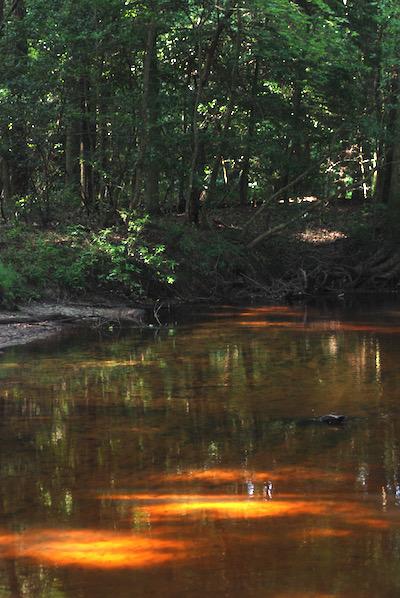
Water sampling has found a wide number of drugs and wastewater pollutants in the lakes and streams of Congaree National Park/Kurt Repanshek file
Traces of pharmaceuticals, pesticides, and chemicals turned up in a sampling of water deep within Congaree National Park in South Carolina, according to the U.S. Geological Survey.
Though the concentrations of the pollutants -- 49 pharmaceuticals and 47 other contaminants -- were not considered high enough to pose a risk to park visitors who might drink water in the backcountry, they point to problems with area runoff and, possibly, backcountry travelers, said Paul Bradley, USGS Research Ecologist/Hydrologist who authored the report released Thursday. More research would be needed to determine whether the concentrations posed a threat to aquatic life, however.
“While there was a large variety of contaminants found during the study, many were detected in locations that could be explained by agriculture or wastewater treatment plants on rivers upstream and outside of the park,” Bradley said. “However, some of the contaminants were found in lakes far away from the rivers flowing into the park, leading us to believe the source of these was likely people within the park.”
Pharmaceuticals were found in water samples from across the park, with higher occurrences and concentrations near the Congaree and Wateree Rivers and in Horseshoe Lake, which are all locations downstream of municipal wastewater discharges from Columbia, South Carolina and Charlotte, North Carolina.
Metformin, a drug used to treat diabetes and one often found when wastewater discharges into rivers or streams, was the most frequently detected pharmaceutical. It was found in 61 percent of the samples, and was the only pharmaceutical observed in either water or sediments at all 16 sites.
Some of the contaminants found, like antibiotics and antibacterials, have been shown in studies elsewhere to negatively affect microbes, which form the base of aquatic food webs. Other pharmaceuticals detected in the park have been shown elsewhere to alter fish behavior and health.
The insect repellant DEET, or N, N-diethyl-m-toluamide, was one of the most commonly found contaminants in the park, being detected in 71 percent of all water samples. It was found at least once in every surface water body within the park, including those deep in the park unaffected by wastewater discharges.
Because Congaree's "marsh-like floodplains" don't hold much oxygen, the pollutants turned up in the testing are not likely to naturally degrade, the researchers said.



Add comment